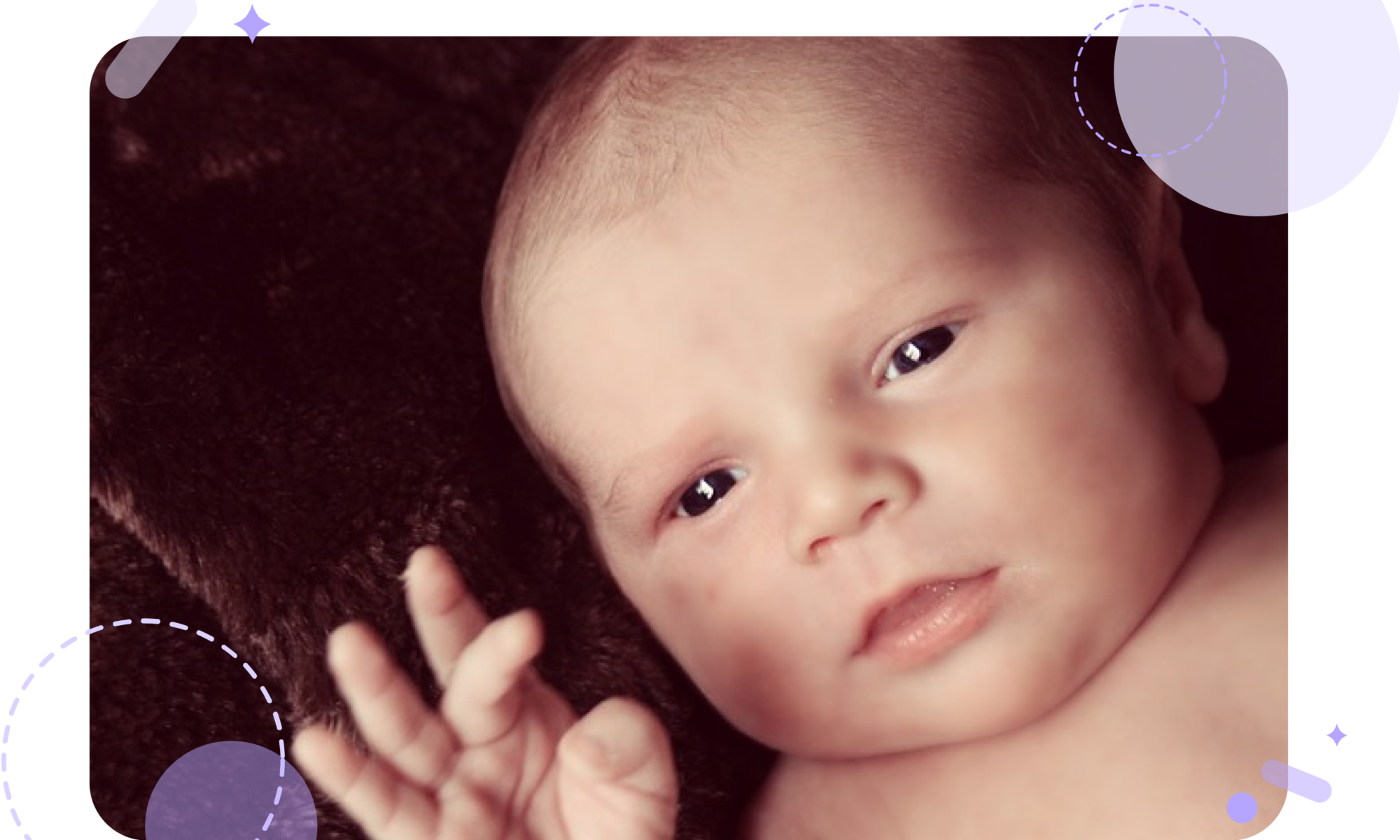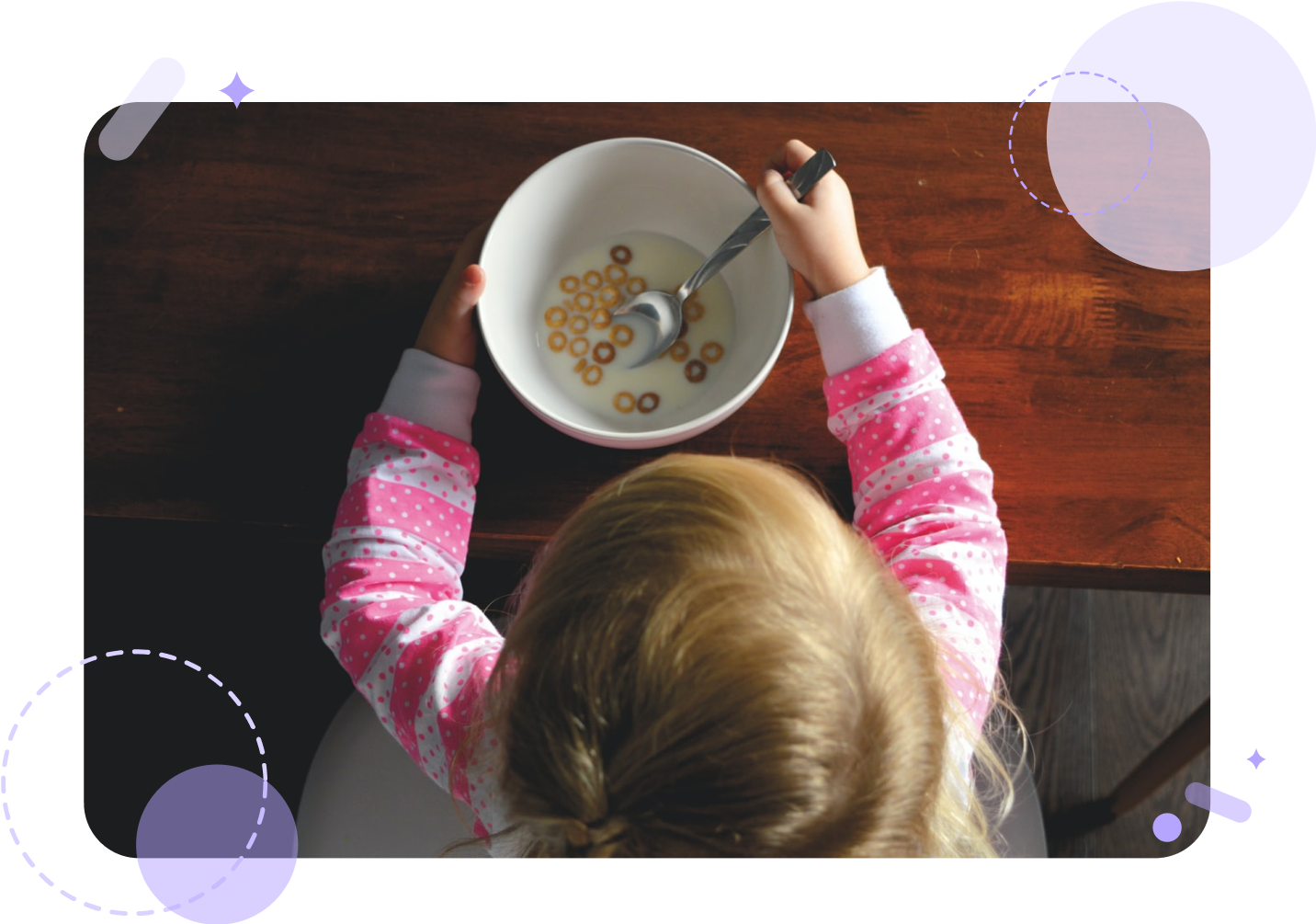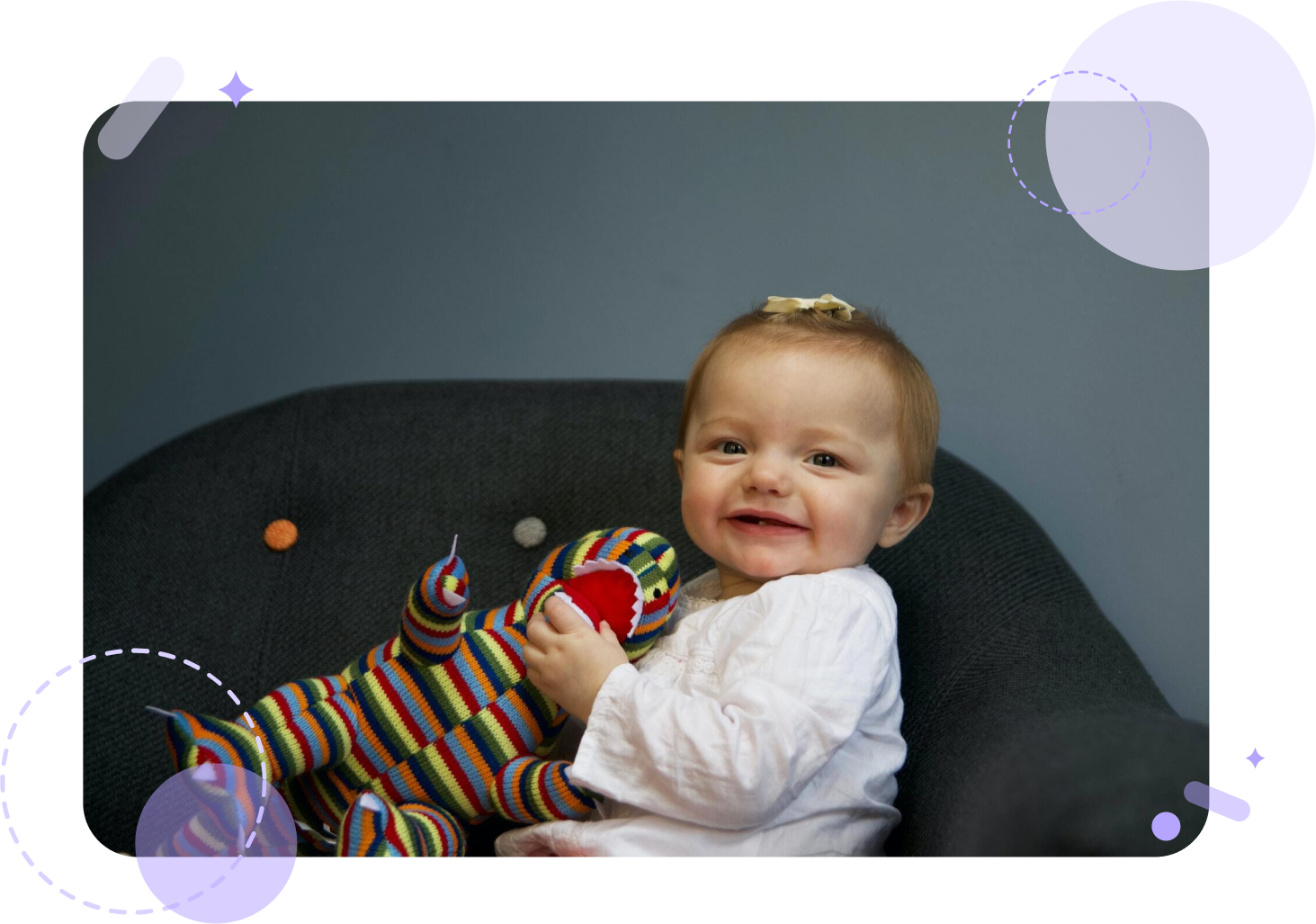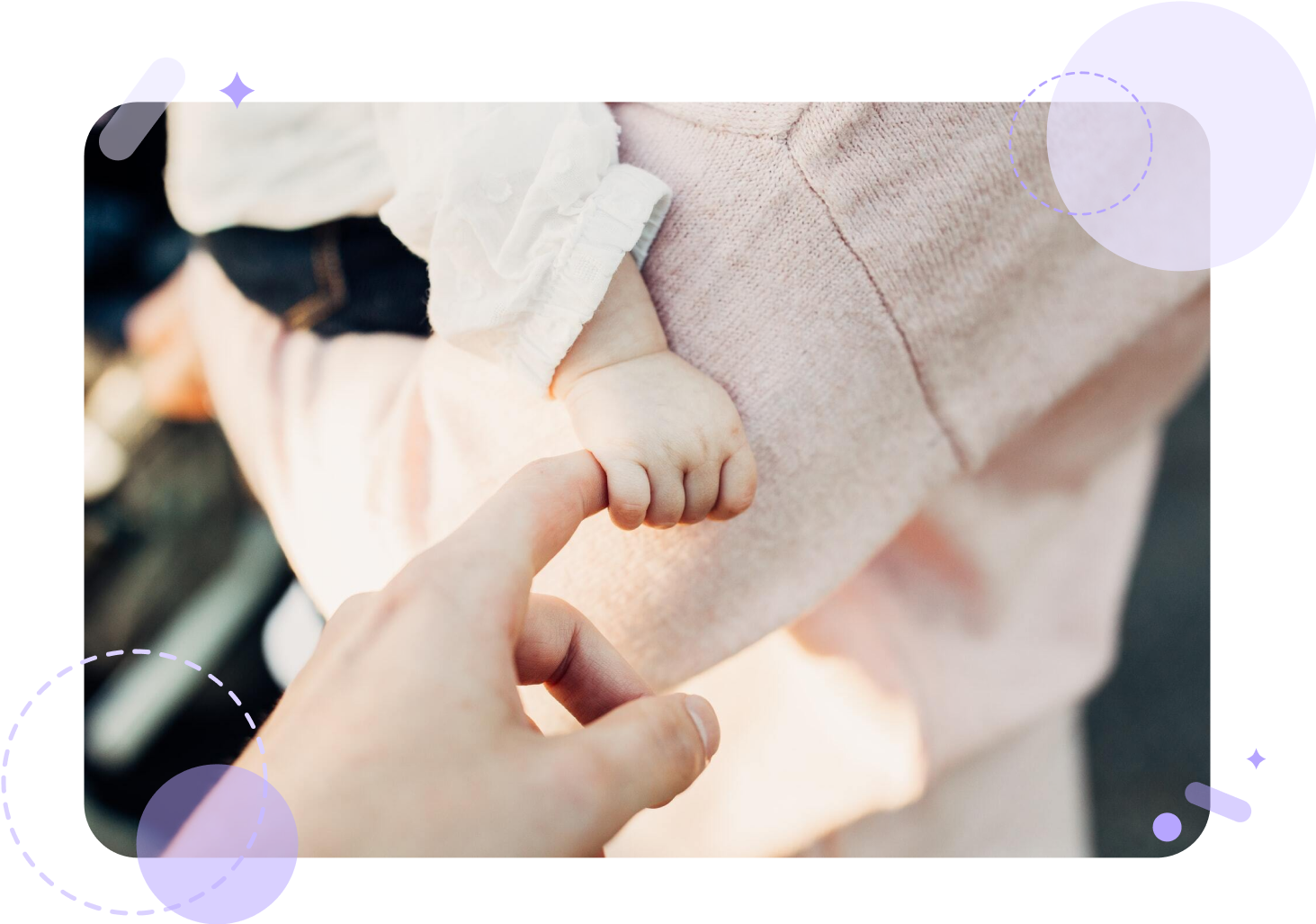
Coordination between the eyes and hands is an important milestone in your baby’s development. Hand-eye coordination refers to the ability of different parts of your baby’s brain to merge information and establish sensorimotor skills that enable the eyes to focus on objects and the hands to move in a certain way. As an example, the eyes might observe a dangling toy nearby and direct the hands to grab it. These skills develop simultaneously with motor and visual skills and are a central part of the initial phases of perception (how your baby experiences the world) and cognition (your baby learning how they interact with the world).
It takes time for your newborn’s eyes to come to full functionality, such as strengthening eye muscles, or fine-tuning the communication between the eyes and the nerves that control them. As vision is the most critical aspect of perception, improvements in your baby’s vision will lead to developments in other areas. Vision constantly shapes the internal models of space and enables babies to move within an ever-evolving action space.
Babies’ vision at birth is just 8 to 10 inches from their face, and most of the images they can see clearly will be directly in front of them. All other images at an angle to your baby’s vision will be blurry to them. At this stage, your baby has not yet learned to coordinate their eyes to give them the ability to turn to a particular angle or focus on a particular object. As such, your baby may look cross-eyed due to lack of this coordination at birth. This is common in newborns up until three months of age. Cross-eyed appearance improves with time as the baby’s brain develops and perfects fine muscle movements, including the muscles that control the movement of eyes.
Around three months of age, your baby might, at times, coordinate the movement of their hands with the eyes as a result of the development of their fine motor skills and improving vision.
Developing the ability to coordinate the information received through the eyes and link it with motor skills controlling the actions of the hands takes time and is a continuous process. Nevertheless, babies can do other things during one to three months of age, like following objects without crossing the midline, bringing their hands together to the center of their body, and reaching out for objects within visual range.
Between three to four months of age, you can also see them playing with their fingers as they are curious about the world around them – especially their own body. Babies like to touch and feel everything. These little steps help develop hand-eye coordination and lay the foundation for fine motor development.
Your baby develops depth perception around the fourth month of age. Depth perception is the ability that allows the baby to assess the distance of an object from them, forming a 3-D view of the world, which is a key component in cognition. Depth perception is not present at birth as your baby initially can see very little in distances and in angled views.
Your baby can also use their fingers to rake and pick small things and bring them closer around this age. They will use both hands equally, performing the same function as raking and grasping toys, which indicates that the connections between the two halves of the brain are working fine. It is important that the baby has qualitative balance across both hands.
By the sixth month, babies can grasp their favorite toy and pass it from one hand to another, which is an attribute to improving hand-eye coordination and fine motor skills. Seeing this in your baby indicates that all the critical parts involved in this coordination are working appropriately.
When your baby reaches two years of age, their hand-eye coordination and depth perception will have developed significantly through which they will be able to attain a much better grasp of the world around them. Engage your baby to help them develop hand-eye coordination:
- Keep their favorite toys or other objects they are interested within their vicinity.
- Toys that rattle help as they grab the baby’s attention, which will encourage your baby to give them a shake!
- Move around while talking to your baby to help them follow your movements.
Hand-eye coordination is vital for a baby to engage in daily activities and interact with their favorite toys, as well as with parents and family. Watching your baby become more aware of their surroundings and begin to use their hands with purpose marks an exciting milestone in their life. You will be amazed by how quickly they learn!
 Back
Back

